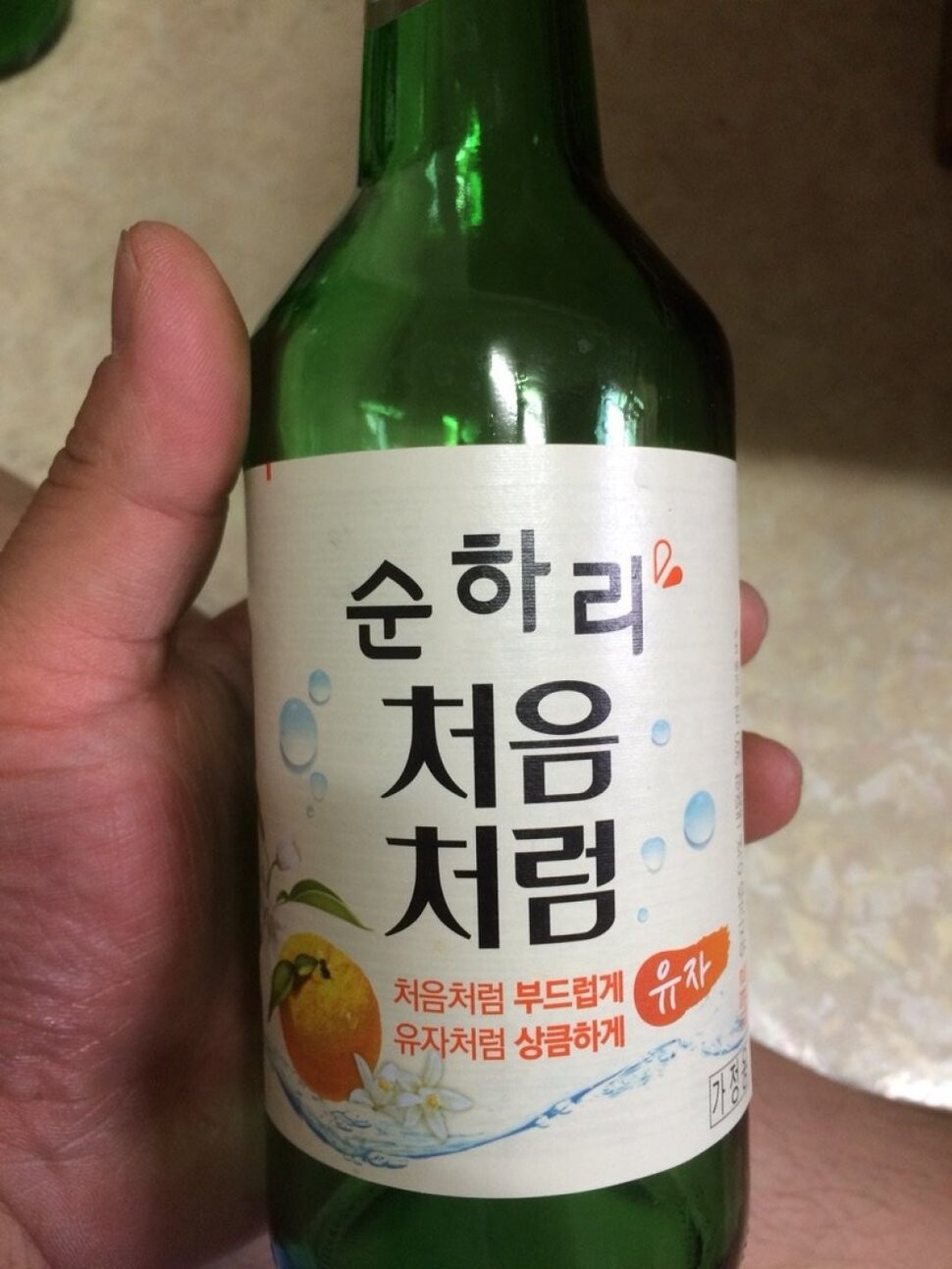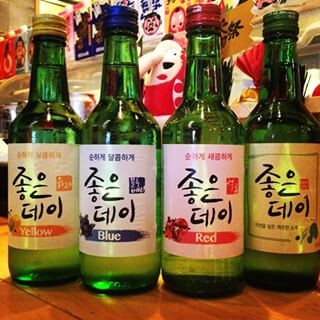hankyoreh
Links to other country sites 다른 나라 사이트 링크
Sweet, fruit-flavored sojus taking the booze market by storm

After a citron-flavored soju by Lotte Chilsung Beverage called Sunhari Like the First Time became wildly popular, gaining a reputation as the “honey butter chips” of the alcoholic beverages industry, rival manufacturers have released a number of sweet sojus with fruit flavors. Some suggest that the fruit soju craze from the 1990s is making a comeback 20 years later.
It has been just over a month since Sunhari was released at the end of March, but it has already sold more than 1.5 million bottles. At first, the soju was only released in Busan and South Gyeongsang Province, but when the product proved far more popular than expected, creating a sense of scarcity, Lotte started selling it around the country. Lotte has also cranked up its production by manufacturing the brew at its Gunsan factory in addition to its Gangneung factory.
“We believe that the shortage of the product will be partially resolved within two weeks,” a representative at Lotte Chilsung Beverage said.

Following this, Muhak, the third largest soju manufacturer in South Korea, released three products containing fruit syrups on May 11 as part of its Good Day line: Blue (blueberry), Red (pomegranate), and Yellow (citron).
With an alcohol content of 13.5%, these fruit sojus are half a percentage point weaker than Sunhari. Keumbokju, a soju manufacturer that is based in Daegu and North Gyeongsang Province, is also planning to release a fruit-flavored soju soon. Meanwhile, Hite-Jinro, the market leader, is watching the market trends.
While fruit-flavored, low-alcohol soju is in the spotlight for the moment, it is unclear how long this phenomenon will continue. Lemon soju was all the range in university neighborhoods in the 1990s, but its popularity had evaporated by the end of the decade.
Since Sunhari’s huge success took place in the limited area of Busan and South Gyeongsang Province, it may be too early to say whether it will be able to dominate the national market.
Golden Blue, which bucked the trend of declining sales in the domestic whisky market by selling low-proof whisky, is from Busan. Busan is also the place where Good Day, a brand of milder soju, was able to shove aside True Dew and Like the First Time, the number one and two soju brands around the country, to gain a 70% market share.
In other words, Sunhari may have been able to succeed in Busan because the market was already primed for low-proof booze.
“The customers who prefer fruit-flavored low-proof alcohol tend to be young women. Young women are not a market segment who drink a lot of alcohol. While we will have to wait and see, there are likely to be definite limits on how much of the total soju market a fruit-flavored product can capture,” a marketing director in the alcohol industry said.
By Yoo Shin-jae, staff reporter
Please direct questions or comments to [english@hani.co.kr]

Editorial・opinion
![[Column] Park Geun-hye déjà vu in Yoon Suk-yeol [Column] Park Geun-hye déjà vu in Yoon Suk-yeol](https://flexible.img.hani.co.kr/flexible/normal/500/300/imgdb/original/2024/0424/651713945113788.jpg) [Column] Park Geun-hye déjà vu in Yoon Suk-yeol
[Column] Park Geun-hye déjà vu in Yoon Suk-yeol![[Editorial] New weight of N. Korea’s nuclear threats makes dialogue all the more urgent [Editorial] New weight of N. Korea’s nuclear threats makes dialogue all the more urgent](https://flexible.img.hani.co.kr/flexible/normal/500/300/imgdb/original/2024/0424/7317139454662664.jpg) [Editorial] New weight of N. Korea’s nuclear threats makes dialogue all the more urgent
[Editorial] New weight of N. Korea’s nuclear threats makes dialogue all the more urgent- [Guest essay] The real reason Korea’s new right wants to dub Rhee a founding father
- [Column] ‘Choson’: Is it time we start referring to N. Korea in its own terms?
- [Editorial] Japan’s rewriting of history with Korea has gone too far
- [Column] The president’s questionable capacity for dialogue
- [Column] Are chaebol firms just pizza pies for families to divvy up as they please?
- [Column] Has Korea, too, crossed the Rubicon on China?
- [Correspondent’s column] In Japan’s alliance with US, echoes of its past alliances with UK
- [Editorial] Does Yoon think the Korean public is wrong?
Most viewed articles
- 1[Column] Park Geun-hye déjà vu in Yoon Suk-yeol
- 2Will NewJeans end up collateral damage in internal feud at K-pop juggernaut Hybe?
- 3N. Korean hackers breached 10 defense contractors in South for months, police say
- 4[Guest essay] The real reason Korea’s new right wants to dub Rhee a founding father
- 5Up-and-coming Indonesian group StarBe spills what it learned during K-pop training in Seoul
- 6[Editorial] Japan’s rewriting of history with Korea has gone too far
- 7Why Korea shouldn’t welcome Japan’s newly beefed up defense cooperation with US
- 8Terry Anderson, AP reporter who informed world of massacre in Gwangju, dies at 76
- 9Thursday to mark start of resignations by senior doctors amid standoff with government
- 10Senior doctors cut hours, prepare to resign as government refuses to scrap medical reform plan